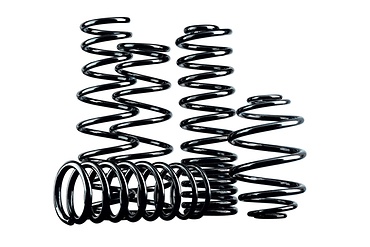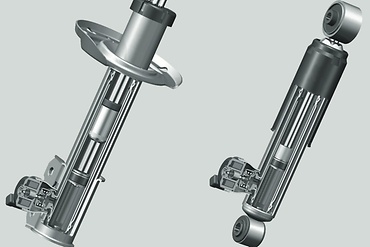Environmental protection and disposal
The proper disposal of shocks is an important topic for ZF. After all, environmental protection is a key corporate objective. According to our corporate philosophy, product quality includes not only optimum operating properties, long service life and convenient installation, but also saving resources, recycling and preserving the environment. For us, this means developing, producing and disposing of products in environmentally compatible ways.
All SACHS damper packages contain clear, multi-language information on the disposal of shock absorbers. At a glance, the mechanic can see all the important information he needs on how and where to dispose of defective shock absorbers.
The easiest way is to take them to a certified disposal company. However, if you want to dispose of them yourself in the workshop, perform the following steps, always observing accident prevention and environmental protection regulations:
Why is proper shock absorber disposal important?
Just as maintaining your vehicle’s proper working is important, you must know your responsibility towards the environment. Shock absorbers are essential components that strike a balance between providing comfort and safety by effectively controlling the vehicle's suspension, ensuring stable handling, maximizing road contact, and minimizing vibrations for a more enjoyable and secure driving experience.
However, when disposing of a defective shock absorber, you must know its impact on the environment. Shock absorbers comprise mineral oil, which leads to severe damage to the environment if it enters the groundwater, soil, rivers, or lakes. Proper shock absorber disposal ensures environmental protection at its best.
Common mistakes in shock absorber disposal
Here are a few mistakes you can possibly make in shock absorber disposal, and you must avoid doing them at all costs:
- Improper Disposal Locations: One common blunder is dumping a shock absorber in the wrong place. They should not be disposed of in typical garbage cans, dumped in the environment, or disposed of in landfills.
- Environmental Impact: Shock absorbers comprise hazardous materials such as oil and gas that can leak and pollute soil and water if incorrectly disposed of.
- Failure to Drain Fluids: Shock absorbers must be properly drained of any oil or gas, before disposal to avoid leakage during transportation and disposal.
- Neglecting Regulations: Each country, and sometimes even the different governmental districts, may have different disposal regulations in place for disposing of automotive components such as shock absorbers. Neglecting these regulations may result in fines or legal consequences.
- Not Consulting an Expert: When in doubt about the proper disposal method, it is a mistake not to seek advice from an expert or local waste management authority.
- Unsafe Handling: Shock absorbers can continue to have residual pressure, and improper disposal can result in accidents or injuries. When dealing with them, consistently adhere to the safety guidelines.
Benefits of proper shock absorber disposal
There are several advantages to properly disposing of shock absorbers, such as:
- Environmental Protection: Properly disposing of shock absorbers keeps hazardous materials such as oil and gas from leaking into the environment, thus minimizing soil and water contamination.
- Resource Conservation: Recycling shock absorbers saves valuable resources by reusing materials like metals and plastics, diminishing the need for new raw materials.
- Energy Savings: Recycling uses less energy than producing new components, resulting in energy savings and lower greenhouse gas emissions.
- Regulation Compliance: Proper disposal ensures compliance with local and national regulations, staying away from potential fines or legal consequences for improper shock absorber disposal.
- Safety: It is prioritized in proper disposal methods, lowering the risk of accidents or injuries during handling and transportation.
- Reduced Landfill Waste: Responsible disposal practices divert shock absorbers from landfills, helping reduce the amount of landfill waste.
- Long-term Environmental Health: Effective disposal helps contribute to environmental overall health as well as sustainability by reducing pollution and preserving ecosystems.
How-to-guide
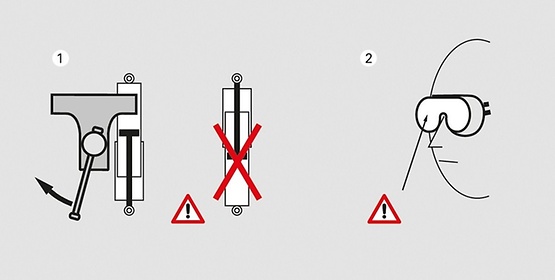
1. Clamp damper in a vise, with the piston rod always pointing down.
2. Wear protective goggles.

3. For gas-filled dampers, first drill a hole into the gas reservoir (ø 3 mm) and allow the gas to escape.
4. Drill a hole into the oil chamber (ø 5 mm).
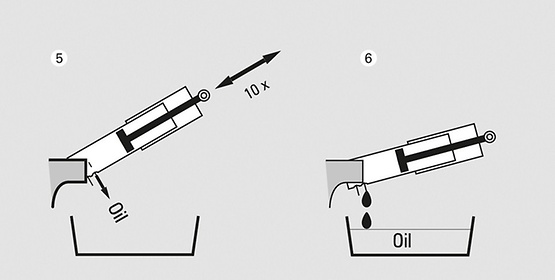
5. Pump the oil out and catch it in a suitable vessel.
6. Allow oil to drip out completely.
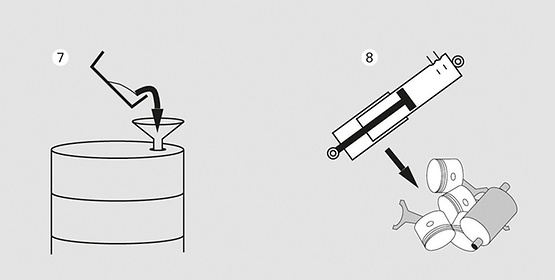
7. Dispose of the oil in a specified used-oil collection tank.
8. Dispose of empty damper as scrap metal.
If you observe these eight points and proceed correctly, it is easy to dispose of dampers in an environmentally friendly way.
Regulations and compliance in shock absorber disposal
To ensure safe and environmentally conscious handling, shock absorber disposal is governed by a variety of regulations and compliance standards. So, when wondering about how to dispose of shock absorbers, think about the regulations you need to follow. These regulations may differ from one region to another, but some common considerations include:
- Hazardous Waste Classification: Used shock absorbers are considered hazardous waste in a lot of places due to the existence of potentially hazardous substances such as oil, gas, and heavy metals. This classification necessitates particular disposal procedures.
- Recycling Requirements: Certain areas require shock absorber recycling in order to retrieve valuable materials such as metals and plastics. This promotes responsible disposal and resource conservation.
- Fluid Drainage: Shock absorbers must be properly drained of any oil or gas, prior to disposal to prevent leakage during transportation and disposal.
- Waste Disposal Facilities: Shock absorbers must be disposed of at authorized waste disposal facilities that have the capacity to deal with hazardous waste. These facilities are intended for the management and containment of potentially hazardous substances.
Frequently asked questions - shock absorber disposal
Since shock absorbers contain oil, gas, and toxic metals, improper disposal poses dangers to the environment. This can result in soil contamination, water pollution, air pollution, and wildlife harm. Toxic substances have the potential to harm ecosystems and human health. Hence, recycling shock absorbers reduces waste, conserves resources, and protects the environment.
Shock absorbers can last from 5 to 10 years, and depending on their condition, they must be replaced and subsequently disposed of properly.
Yes. Shock absorber disposal procedures differ depending on the type. Drain and recycle the oil from hydraulic and gas-charged shock absorbers before disposing of them in accordance with local hazardous waste regulations. Adjustable electronic shock absorbers might include electronic components that must be recycled separately as e-waste. Before disposing of air suspension shock absorbers, the airbags have to be deflated. Integrated struts must be disassembled according to the manufacturer's instructions. Investigate recycling options for shock absorbers whenever possible to recover valuable materials. For particular disposal guidelines, look into local regulations and the manufacturer's suggestions.
ZF Aftermarket product range
Discover the complete portfolio of suspension systems in our product catalog.
